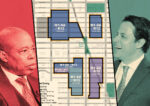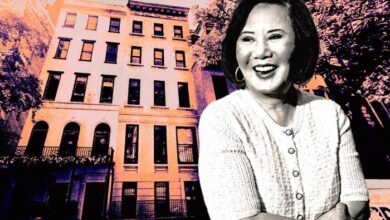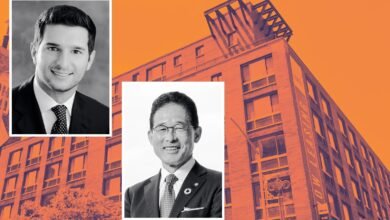City Council Committees Approve Midtown South Rezoning
The Midtown South rezoning is moving forward, but with a few changes that shave 165 apartments off the number of housing units to be built in the neighborhood.
The City Council’s Land Use Committee and Subcommittee on Zoning and Franchises voted on Wednesday to advance the rezoning of 42 blocks in Midtown South, but reduced the residential density allowed in certain parts of the neighborhood. With the changes, the rezoning is expected to net 9,535 housing units, with 2,842 affordable. That’s down from the 9,700 units, of which 2,890 would be affordable, originally projected.

The rezoning now heads back to the City Planning Commission before it is put up for a vote before the full City Council.
The rezoning will affect four non-contiguous areas of Midtown South, bounded by 40th Street to the north, Fifth Avenue to the east, 23rd Street to the south and Eighth Avenue to the west. The areas are zoned for manufacturing use, and either bar housing construction or limit it considerably.
The Council reduced the residential density permitted in a four-block area within the southeast portion of the rezoning, between 23rd and 27th streets. The maximum residential floor area ratio in that perimeter was reduced from 18 to 15.
The Council also removed a planned high-density residential designation midblock between West 36th and 40th streets between Seventh and Eighth avenues. Council member Kevin Riley, who chairs the subcommittee, indicated that those changes would not have a significant impact on the housing expected to be built under the rezoning because the city did not expect properties in that area to be redeveloped as housing.
“Over the past several months, public input has made it clear that there is a unique cluster of businesses in the Garment District and that these businesses depend on each other and their proximity to the Theater District,” Riley said. “If they are relocated throughout the city, they would not be able to function.”
The Council also opted to keep base height maximums for buildings in the southeast portion of the rezoning areas to between 60 and 150 feet to ensure the street wall is not “overwhelming to pedestrians,” Riley said.
Ahead of the votes, Council member Erik Bottcher noted concerns raised by fashion-related businesses in the Garment District that they would be driven out of the area as landlords emptied their buildings to redevelop their properties. Bottcher said the modified rezonings ensure that “new housing and new business growth can thrive side-by-side.”
As part of the rezoning, the Adams administration committed $121.9 million for programs dedicated to helping garment businesses.
The rezoning marks the first time that the city has mapped new residential districts, known as R11 and R12. The districts, created as part of the City of Yes for Housing Opportunity, respectively permit a residential floor area ratio (FAR) of 15 and 18, allowing housing projects to be 15 or 18 times larger than their lot sizes.
The city was able to create the new districts after the state lifted a restriction on residential density in the city last year. Residential FAR was previously capped at 12.
The rezoning is also the first time that Mandatory Inclusionary Housing has been used in Midtown Manhattan.
Leading up to Wednesday’s votes, elected officials and community members discussed scaling back the rezoning. One proposal called for significantly reducing density in the southeast quadrant of the rezoning area, where the city wants to allow residential space with an FAR of 18. City Planning testified during a hearing last month that such a change would result in a 55 percent loss of housing.
Wednesday’s changes were not as drastic.
Community Board 4 called for height limits and suggested a special permit for any residential building where the developer wishes to exceed an FAR of 12. The changes were driven, in part, to disincentivize developers from demolishing their properties.
As the first neighborhood rezoning to employ the new residential districts, Midtown South is a critical test for the City Council. The administration did not try to map the districts in another major rezoning in Long Island City, where the highest FAR for residential space under the rezoning will be 12.
The inability to approve these districts in a dense, transit-rich area of Midtown Manhattan would jeopardize the chances of doing so elsewhere in the city. In other words, if Midtown wasn’t able to be successfully rezoned under City of Yes, it likely wouldn’t happen anywhere else.
Read more

Midtown South rezoning presents test case for new high-density zoning districts

City kickstarts Midtown South rezoning to build 9,700 homes

The Daily Dirt: Moment of truth for Midtown South




